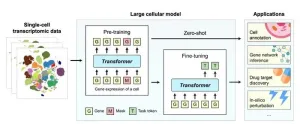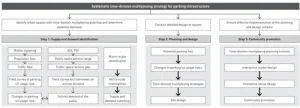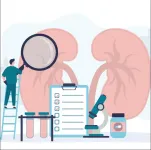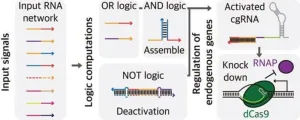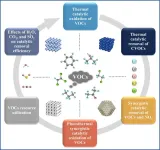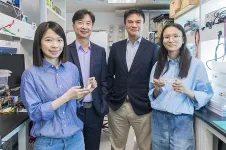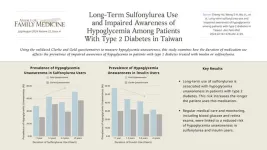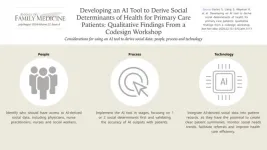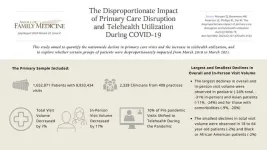Published today (Tuesday 23 July) in the Journal of Applied Ecology, a paper from international conservation charity ZSL and researchers at York University, Toronto, titled ‘The Kunming-Montreal Global Biodiversity Framework and the Paris Agreement need a joint work programme for climate, nature, and people’ conceptualises how a joint work programme between the United Nations Framework Convention on Climate Change (UNFCCC) and the United Nations Convention on Biological Diversity (CBD) could be established.
Highlighting the issues the joint programme must tackle, and recommendations for successful implementation – the paper argues that such a unified political tool is critical to meet international commitments under both the Paris Agreement and the Kunming-Montreal Global Biodiversity Framework.
Professor Nathalie Pettorelli, who has long been calling for united solutions to tackle climate change and biodiversity loss, is co-author of the paper and researcher at ZSL’s Institute of Zoology explained: “We urgently need a global approach that addresses the nature and climate crises together - because they are intrinsically connected.
“The UNFCCC and CBD are incredible platforms for providing the evidence to, and guiding the way through the changes we need, but higher levels of integration between the biodiversity and climate change agendas are needed to plug implementation gaps.
“The upcoming Conference of the Parties of the UNFCCC and CBD present a clear policy window for the two conventions to introduce a formal governance structure that brings together ideas, people, organisations and processes necessary for joining the dots on how to both stabilize our climate and recover our nature.”
World leaders will come together later this year for two global conventions to separately tackle climate change and biodiversity loss. In October, the CBD will meet in Columbia for the 16th United Nations Biodiversity conference (COP16). A week after its close in November, the UNFCCC will meet in Azerbaijan for the 29th United Nations Climate Change conference (COP29).
Nathalie added: “With the closely related policy agendas of the upcoming UNFCCC and CBD's COPs, negotiators have a key opportunity to take coordinated, bold and transformative action to deliver a new, more integrated and coherent approach to addressing the entwined nature and climate crises. The urgency is such that both conventions need to work together now, and take advantage of the many potential synergies we highlighted between climate change and biodiversity policies to change humanity’s course towards a sustainable future".
Government representatives at COP16 will be tasked with assessing the state of implementation of the Kunming-Montreal Global Biodiversity Framework which was adopted in 2022, outlining a path for humanity to live in harmony with nature by 2050 - with goals including halting and reversing biodiversity loss by 2030. Discussions during COP29 will be key in progress towards the landmark international treaty to limit global temperature increases to 1.5°C above pre-industrial levels, known as the Paris Agreement.
Climate change and biodiversity loss are inherently interconnected; rapidly changing conditions drive the loss of species and the subsequent breakdown of ecosystems across the world – however healthy, functioning ecosystems are absolutely key to tackling climate change and mitigating its impacts.
Professor Idil Boran, co-author and researcher at York University's Faculty of Liberal Arts and Professional Studies, Toronto said: “The world is currently at a crossroads. World leaders have signed international treaties that commit them to take action to address these two crises – but there is currently a massive gap in the tools available to ensure this action is unified. We need a programme that fills these gaps, identifies areas where climate actions may harm to biodiversity, provides clear recommendations and develops methods to monitor progress on shared goals.
“Without this, we risk action to tackle one crisis creating major setbacks for the other. For example, the replacement of natural grasslands with forests may help capture and store planet-warming carbon dioxide, but it does so at a cost of the ecosystems and wildlife that previously used the land.”
Properly implemented Nature-based Solutions (NbS) – natural systems that help achieve societal goals – tackle climate change and biodiversity loss simultaneously, while also bringing benefits to people. For example, the restoration of mangroves not only helps with carbon storage, but also protects the homes of species such as Endangered Bengal tigers and Critically Endangered Philippine cockatoo, and provides food and resources for local communities.
The paper also calls for the vital need for the reallocation of resources to address imbalances in funds and support available for action to address climate change in comparison with biodiversity loss.
Nathalie added: “There is a wider need for world leaders to ensure they’re putting nature at the heart of their decision making. Functioning ecosystems aren’t just important for addressing rapid climate change – losing them impacts every aspect of our lives, from food security to access to clean water. We need these to be recognised and conservation to receive the resources needed for it to be part of the solution towards tackling climate change and championing human wellbeing.”
From restoring mangrove forests in the Philippines equivalent to over 1,000 football pitches to calling for the rewilding of urban spaces to help protect city dwellers from the worst impacts of climate change, this call is part of ZSL’s wider global work pushing for and implementing urgent action to build a better future for people and planet.
ZSL believes nature can recover, and that conservation is most effective when driven by science. ZSL call for science to guide all global decisions on environment and biodiversity and build a healthier future for wildlife, people and the planet. Find out more and support ZSL’s world-leading, collaborative science and conservation work at www.zsl.org
###
MEDIA CONTACTS:
Anna McConachie & Sophie Teall | anna.mcconachie@zsl.org |sophie.teall@zsl.org | press.office@zsl.org| 07890039163
Sandra McLean, York University Media Relations | sandramc@yorku.ca
ZSL
Founded in 1826, ZSL is an international conservation charity, driven by science, working to restore wildlife in the UK and around the world; by protecting critical species, restoring ecosystems, helping people and wildlife live together and inspiring support for nature. Through our leading conservation zoos, London and Whipsnade, we bring people closer to nature and use our expertise to protect wildlife today, while inspiring a lifelong love of animals in the conservationists of tomorrow. Visit www.zsl.org for more information.
Nature Based Solutions
Nature-based Solutions are environmental approaches that address societal challenges, such as climate change, through actions to protect, sustainably manage, and restore natural and modified ecosystems, benefiting people and nature at the same time . These approaches include restoring ecosystems and protecting landscapes. Professor Pettorelli’s past work has highlighted the importance of political support for nature based solutions in order to turn the tide on climate change and biodiversity loss, alongside specific examples of how steps such as rewilding cities and the inclusion of nature nature-friendly spaces within new housing developments are key to building a better future for all.
Unite solutions to climate and biodiversity crises | ZSL
York University
York University is a modern, multi-campus, urban university located in Toronto, Ontario. Backed by a diverse group of students, faculty, staff, alumni and partners, we bring a uniquely global perspective to help solve societal challenges, drive positive change and prepare our students for success. York's fully bilingual Glendon Campus is home to Southern Ontario's Centre of Excellence for French Language and Bilingual Postsecondary Education. York’s campuses in Costa Rica and India offer students exceptional transnational learning opportunities and innovative programs. Together, we can make things right for our communities, our planet, and our future.
END
